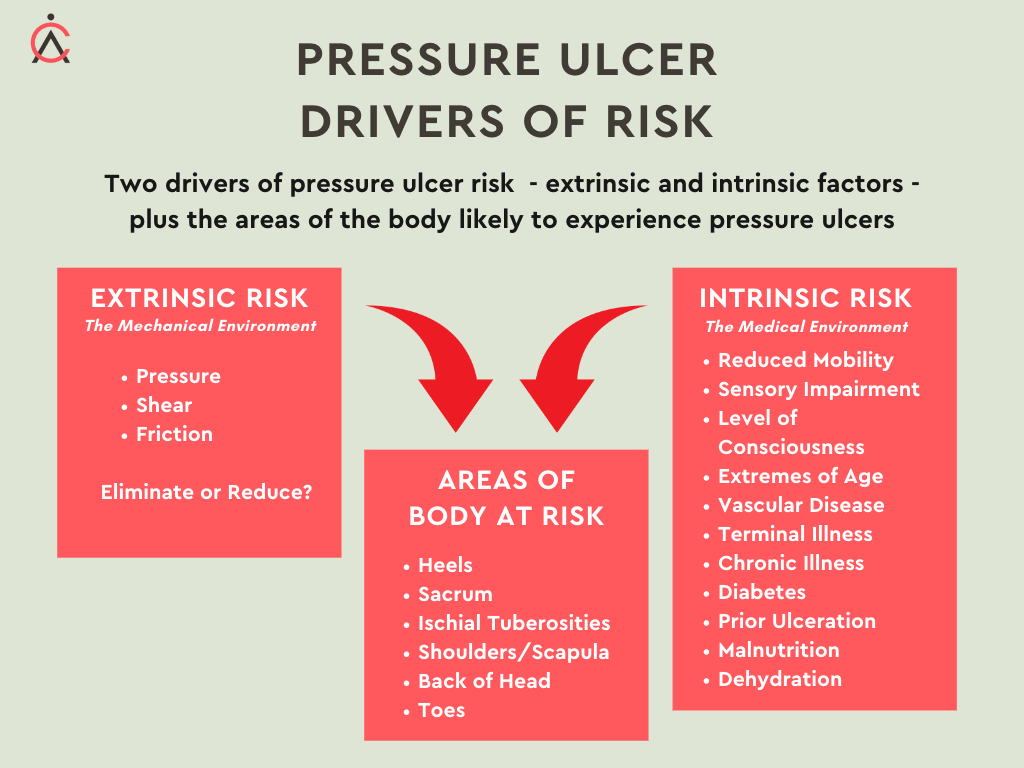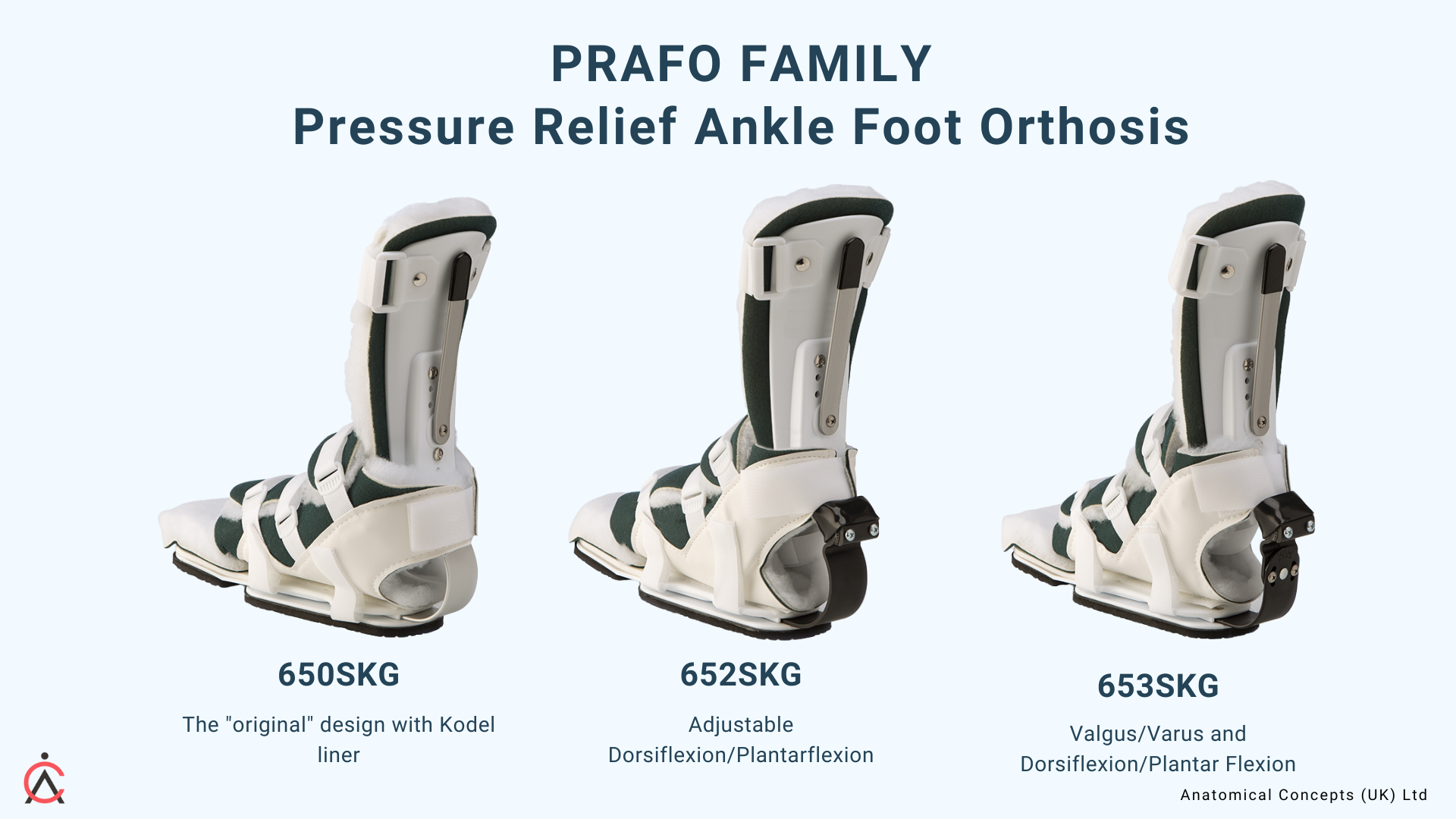Why the PRAFO Range of ankle foot orthosis is the market leader
When it comes to treating (or ideally) protecting against heel pressure ulcers, choosing the right product is essential. Every day, thousands of patients around the world are put at risk when using inadequate wound care products that fail to prevent and reduce their chances of developing skin breakdown due to prolonged tissue compression.
This is why investing in a well-researched heel protector that offers consistent protection is critical for orthotists, physiotherapists, doctors and patients alike. The PRAFO ankle foot orthosis range of heel protectors stands out as the top option on the market thanks to their impressive and often unique design features – this blog post will explore how they work and how these designs can support clinicians in preventing further tissue damage and keeping patients ambulant.
The importance of heel pressure ulcers
Heel pressure ulcers have always been a challenge to prevent and treat and remain a major problem in healthcare. These ulcers can lead to severe consequences, such as bone infections and limb amputations. We could think of them as an expensive epidemic.
Unfortunately, many people are still unaware of the importance of preventing and treating heel ulcers. As we have reported in earlier articles on this topic, pressure ulcers cost the NHS millions of pounds per day to treat. This of course does not reflect the true economic and social cost of this problem.
The image below shows the areas of the body that are particularly at risk of pressure ulcers.
Areas such as the heel that are at risk of pressure ulcers have a bony prominence covered with relatively little tissue. In healthy individuals, the pressure and other mechanical effects typically experienced at a person's heel are not enough to cause a problem; the person will react to the experience of discomfort by moving and thereby relieve the pressure. So pressure alone is not enough to normally cause an ulcer.
So what contributes to a heightened risk of pressure ulcers?
We can describe both "extrinsic factors" and "intrinsic factors" as contributing to the risk of pressure ulcers. The pressure ulcer label suggests that pressure on the vulnerable area of the body is the key factor in creating risk, but the reality is a little more complex. Certainly, the mechanical effects of pressure, friction and shear are risk factors but the intrinsic risk factors are likely to represent the dominant influence.
As shown in the image, there are many risk factors for people including those who might be elderly, diabetic, immobile or nutritionally compromised.
As healthcare professionals, it is our responsibility to ensure that patients are educated on the risks and preventative measures associated with heel pressure ulcers.
Through informed management and effective treatment, we can significantly reduce the incidence and severity of this debilitating condition.
To minimise risk we need to deal with BOTH the intrinsic and extrinsic risk factors to the greatest degree possible. Pressure will always be important in triggering a negative chain of events so it makes sense to eliminate this whenever possible.
What is the PRAFO Ankle Foot Orthosis?
The PRAFO Ankle Foot Orthosis (PRAFO is a registered trademark and originates from the term "Pressure Relief Ankle Foot Orthosis"). A PRAFO is a medical device designed to help individuals with various foot and ankle conditions. It is particularly useful in preventing heel ulcers, as it provides ample support and protection to sensitive areas around the foot and ankle whether the patient is immobile in bed or ambulant.
A PRAFO Ankle Foot Orthosis helps to alleviate the worry of pressure ulcer risk and can promote optimal recovery if it is used with an existing heel ulcer. With its advanced design and innovative features, medical professionals in many countries of the world, frequently recommend a PRAFO Ankle Foot Orthosis as a top choice for their patients.
More than 25 years ago now, the founder of Anatomical Concepts (UK), Derek Jones, was serving as a Visiting Professor at the Cleveland Clinic in Ohio and saw an innovative product - the original PRAFO - the 650SKG. On contacting the manufacturer, Derek discovered that the PRAFO had been designed by Bill DeToro, the CEO of Anatomical Concepts Inc. Bill, a practising orthotist, designed the original PRAFO ankle foot orthosis to protect the heels of patients following hip replacement surgery. Over time Bill created a family of products that dealt with the problem of heel, foot and ankle protection whether the patient was ambulant or recumbent. Being an orthotist, Bill was keenly aware of both the clinical problem and the mechanical challenge implicit in the problem.
Anatomical Concepts (UK) was founded to introduce the PRAFO range to the UK and this established a successful business connection that has endured for decades.
Why is the PRAFO ankle foot orthosis recommended for heel protection?
The PRAFO ankle foot orthosis is a frequently recommended solution for heel protection or treatment, especially for individuals who are at a high risk of developing heel ulcers.
These orthoses have been designed to redistribute pressure around the foot and ensure that there is ZERO pressure, shear or friction at the heel.
An essential point is that we cannot know if there is a safe level of pressure. The only way of eliminating pressure, friction or shear as risk factors is to eliminate them. When using any of the PRAFO designs, the heel is suspended to eliminate mechanical risk.
The heel area is free from pressure, friction or shear when using a PRAFO ankle foot orthosis
The image above shows the heel suspended to eliminate the mechanical risk. The image also shows some other benefits of the design.
All the PRAFO designs have an intrinsic walking base. This is very important for continuity of care because many patients will need to be mobilised as quickly as possible and remain protected. The PRAFO designs allow safe, protected ambulation.
All the PRAFO designs feature a metal upright structure. Many competitor products might superficially look similar to the PRAFO but only the PRAFO designs feature a metal upright structure (aluminium or steel depending on patient weight) that joins the calf and foot sections. This is essential for safe ambulation and as we will see below allows for foot/ankle alignment adjustments.
For patients at risk of developing plantarflexion contractures (for example, following a stroke) the metal structure can help to prevent these from developing. Using a plastic upright structure would allow the foot to plantarflex and this can delay or prevent ambulation later.
All the designs are adjustable and suit left or right legs. The designs are generally available as Adult and Paediatric versions and adjustable in size. Some designs are suitable for infant or bariatric users. All designs fit either limb so there is no need to stock left and right foot models.
Adjustment possibilities. Bill DeToro's original design was similar to the current 650SKG design in that the posterior upright structure was only adjustable using the specialist bending tools that an orthotist might have access to. The 652SKG and 653SKG designs evolved from the original model and were created to make adjustment of dorsiflexion/plantarflexion (652SKG) and additional valgus/varus (653SKG) adjustments possible with just a screwdriver.
Liner possibilities. The standard original liner featured a synthetic sheepskin design chosen to be non-allergenic, washable and replaceable and with good tissue protection properties. Other liner possibilities were developed to allow the use of the PRAFO when bulky wound dressings were in place or it was necessary to have superior control of foot and ankle motion for ambulation. Terry lining possibilities are also available for many of the PRAFO range
Polypropylene structure. Polypropylene is often used in orthotic practice as it is suitable for various manufacturing approaches whether injection moulded or heat formed. Once formed it is stable and keeps its shape well. It is a material choice that is in step with the need to recycle materials and this is an area that we are all needing to take seriously as we respond to climate change.
Use in the community. The PRAFO designs are easy to fit and therefore can be expected to provide protection when being used in the community and away from specialist healthcare professionals
The PRAFO ankle foot orthosis range offer a viable solution for preventing heel ulcers, promoting healing when necessary, and providing mobility support without the risk of further injury.
Assess the needs of your patient to determine which heel protector is best
As healthcare professionals, we must assess the unique needs of each patient to determine the best course of treatment. This is especially important when considering the use of heel protectors for patients who are at risk for pressure ulcers. Prevention is always better than "cure" - once an ulcer has developed that area will always be at heightened risk due to the nature of the healed tissue.
While there are a variety of heel protectors available and often these are inexpensive, it is important to carefully evaluate the patient's medical and mechanical risk, plus their level of ambulation to determine which option will provide the most effective protection.
Pressure ulcer assessment scales are commonly used but not all are suitable for every clinical situation. Where several risk factors exist it is safest to assume that pressure, shear and friction at the heel should be eliminated. This rules out any product that is in contact with the heel.
Also, think about continuity of care. Is this patient going to need to be mobilised safely? If so you can rely on the PRAFO design to provide ambulant protection.
The core adult models of the PRAFO ankle foot orthosis range
Conclusion
In conclusion, the PRAFO orthosis is an incredibly effective solution for protecting or treating high risk heel ulcers. Through its design and advanced technology, pressure, shear and friction are redistributed around the foot to ensure ZERO pressure on the heel. This makes it especially beneficial to those with diabetes or other medical conditions that may put them at a higher risk of developing heel ulcers. The PRAFO features attributes not available in competing designs such as the adjustable metal frame that facilitates contracture prevention and safe ambulation.
If you are interested in learning more about how PRAFO can help or want to purchase a product, please check out our products section or contact us. We can assist you in discovering what would be best for your individual needs to help protect and treat these problems.





